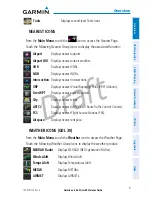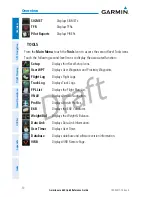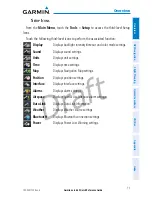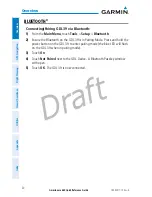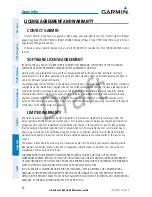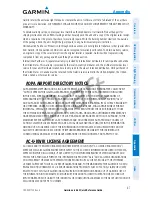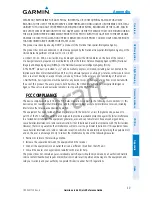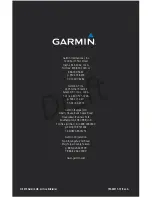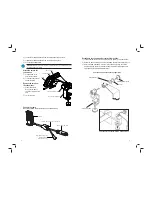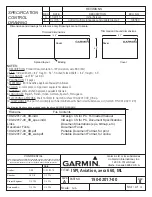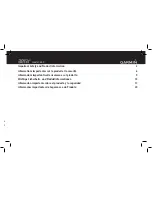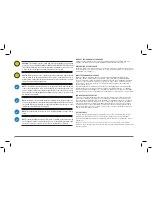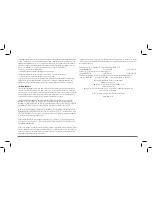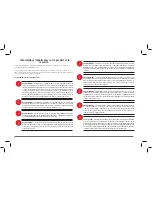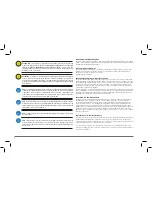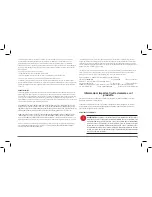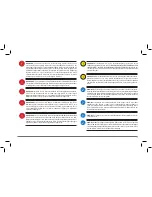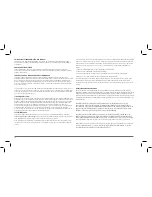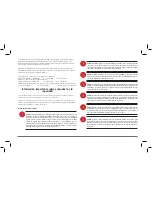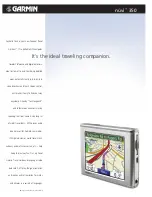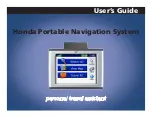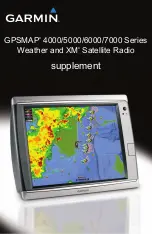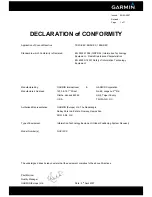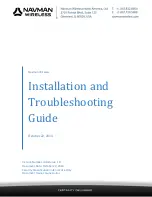
3
WARNING:
Because of variation in the earth’s magnetic field, operating the system
within the following areas could result in loss of reliable attitude and heading indi-
cations. North of 72° North latitude at all longitudes. South of 70° South latitude
at all longitudes. North of 65° North latitude between longitude 75° W and 120°
W. (Northern Canada). North of 70° North latitude between longitude 70° W and
128° W. (Northern Canada). North of 70° North latitude between longitude 85°
E and 114° E. (Northern Russia). South of 55° South latitude between longitude
120° E and 165° E. (Region south of Australia and New Zealand).
WARNING:
The system has a very high degree of functional integrity. However,
the pilot must recognize that providing monitoring and/or self-test capability for all
conceivable system failures is not practical. Although unlikely, it may be possible
for erroneous operation to occur without a fault indication shown by the system.
It is thus the responsibility of the pilot to detect such an occurrence by means of
cross-checking with all redundant or correlated information available in the cockpit.
WARNING:
The government entities operating the satellite-based navigation
systems (GPS/GLONASS) are solely responsible for their accuracy and maintenance.
The satellite-based navigation systems are subject to changes which could affect
the accuracy and performance of all GPS/GLONASS equipment. Portions of the
system utilize GPS/GLONASS as a precision electronic NAVigation AID (NAVAID).
Therefore, as with all NAVAIDs, information presented by the system can be misused
or misinterpreted and, therefore, become unsafe.
WARNING:
For safety reasons, operational procedures of the system must be learned
on the ground.
WARNING:
To reduce the risk of unsafe operation, carefully review and understand
all aspects of the applicable Pilot’s Guide documentation and the Pilot’s Operating
Handbook of the aircraft. Thoroughly practice basic operation prior to actual use.
During flight operations, carefully compare indications from the system to all
available navigation sources, including the information from other NAVAIDs, visual
sightings, charts, etc. For safety purposes, always resolve any discrepancies before
continuing navigation.
WARNING:
The data contained in the terrain and obstacle databases comes from
government agencies. Garmin accurately processes and cross-validates the data,
but cannot guarantee the accuracy and completeness of the data.
WARNING:
Do not rely solely on the navigation information presented on the
aera 660 3D Vision Page. The navigation information displayed is derived from
satellite data and may be different than the navigation information on the primary
navigation instruments.
WARNING:
Never use the aera 660 to attempt to penetrate a thunderstorm. Both
the FAA Advisory Circular, Subject: Thunderstorms, and the Aeronautical Information
Manual (AIM) recommend avoiding “by at least 20 miles any thunderstorm identified
as severe or giving an intense radar echo.”
WARNING:
Do not use the approach information provided by the VFR navigation
database residing within the aera 660 as a means of navigating any instrument
approach. The aera 660 VFR navigation database is limited to present only the
waypoints for the final approach leg of a published procedure. These waypoints
and associated course line are made available for monitoring purposes only.

